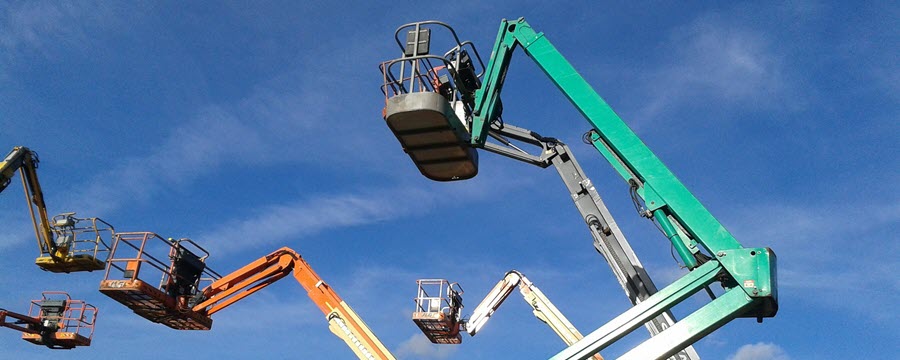
The Basics of Boom Lift Safety for Operators

Construction companies often rely on booms to complete necessary tasks for the job. Correct operation and boom lift safety are essential so the operator and team can manage a project effectively.
Boom lifts are large pieces of equipment, though, and their structure is unlike any other construction vehicle or machine. They pose a significant risk and can be extremely dangerous if operated improperly and without precautions. When operators fail to follow safety measures, team members could get injured.
Fortunately, safety rules and regulations are in place so everyone can feel secure around a boom lift. Here are the basics.
1. Complete a Pre-Lift Inspection of the Boom
Before a lift, the operator must complete a thorough inspection of the boom. This is usually done before each work shift to ensure the equipment is safe to operate. Issues that go unnoticed during inspection increase the risk of accidents. Creating a checklist or double-checking a manufacturer’s manual can help the operator carefully inspect everything.
Items an operator might check include:
- Fluid levels
- Wheels and tire pressure
- Controls
- Steering
- Hydraulic system
- Cables and wiring
- Loose or missing parts
There are many other things an operator can check. If there are any faults with the machine, it should be put out of service until corrected.
2. Ensure the Base Is Clear
In a construction zone, there are often many other people working in addition to the boom operator. Before completing a lift, the operator should check the base and the boom’s circumference to ensure no other workers or obstructions are below.
Clearing the base and circumference decreases the potential for damage and injury. A boom lift can sometimes tip over, but if an operator keeps everything and everyone away when working, then the risk for injury declines.
3. Wear a Harness
Operators of a boom lift must wear harnesses. This is a simple thing to do, but it is vital to the operator’s safety. Even the slightest bump can cause someone to lose balance, which puts them at risk for a fall. Harnesses can save lives.
Additionally, the lift operator may want to climb out onto the platform’s outer edges to reach something. While this is extremely dangerous, it does happen — and that’s why wearing a harness is necessary.
4. Stay at or Under the Weight Capacity
Boom lifts all have their own weight capacity. Adhering to the limit ensures the operator is safe. One of the main lift hazards is when people lift something that is too heavy. This results in the boom tipping over.
It’s best to stay under the weight capacity at all times. As the boom lift height increases, the machine becomes less stable, and that stability further decreases if there’s more weight added than it can handle.
5. Operate the Boom Correctly
When someone becomes a boom operator, they’ve likely gone through training and have reviewed the manual to understand how to move the lift effectively. There are many types of boom lifts, so learning how to operate them correctly results in safe and efficient work.
Boom lifts can be used to accomplish a wide variety of tasks — fight fires, service power lines and pour concrete into high-rise buildings. Some of the machines used in construction include concrete pumps, telescopic boom lifts, cherry pickers and rough terrain scissor lifts. There’s a lot of variety — so each time an operator approaches a different lift for a project, they should review the manual to operate it properly.
6. Use the Boom on Level Ground and in Calm Conditions
If an operator uses a boom lift outside, it’s best practice to find level ground and use it only in calm conditions. Wind can cause a boom lift to tip over, and so can uneven terrain.
One way to stabilize a boom is by using the lift brakes. It keeps the operator and other workers safe. If someone must work on an incline, using wheel chocks can help stabilize the machine further.
Boom Lift Safety Requires Commitment
Safety is the most essential aspect at every construction site. Each time an operator uses a boom, they should inspect its mechanics and ensure no one is in the danger zone. The chances of injury and damage decrease when proper regulations are followed every time a boom lift is used.
About the Author:
Evelyn Long is the editor-in-chief of Renovated, a web magazine for real estate and construction professionals.

